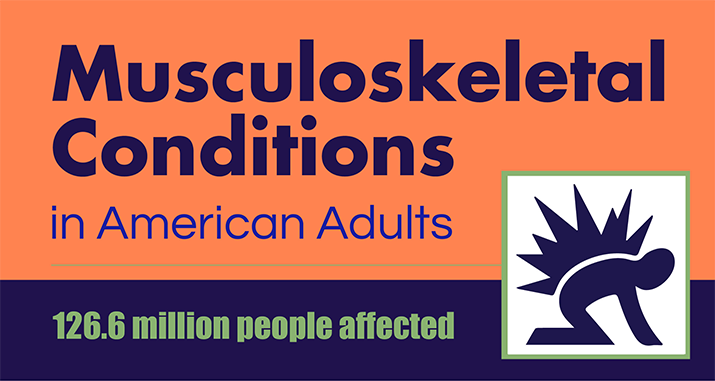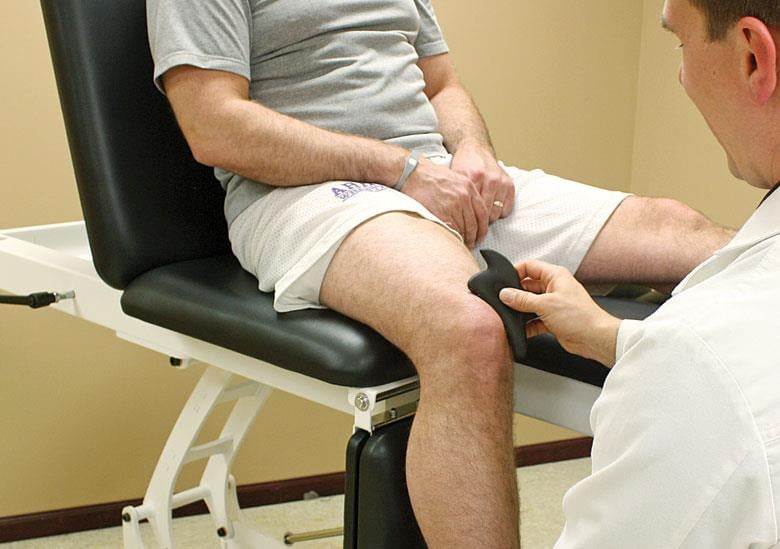According to a new report from the United States Bone and Joint Initiative, an estimated 126.6 million people in the United States (one in two adults) are affected by a musculoskeletal condition.
PHS Chiropractic

Recent Posts
Americans Affected by Musculoskeletal Conditions [Infographic]
The 3 Most Successful Practice Models for 2014
Looking for a model for success? While there are a number of successful practices out there, today’s chiropractic practice is focusing on diversification to meet the demand of today’s public. Along with adjustment, these chiropractors include services such as decompression, laser therapy, whole body vibration and more. Steven Peyroux, DC, explains in a recent article on Dynamic Chiropractic.
Using Technology to Educate Your Clients
People can’t take your television places, thank goodness. It is far less common to see people tote around magazines in a book bags or purses as well. We definitely never catch a wagon full of medical records and bills being pulled behind the everyday commuter. What you do see everyday, is connecting to the web. With the wave of technology, it is merely impossible to not be plugged in via a phone, tablet, or mini laptop that so easily fits into a hand size bag. If this is means that people can communicate and connect at any time, why not with your chiropractor?
A "Master"-ful Win for Chiropractic
In early April, the world watched as 21-year-old Jordan Spieth became the second-youngest golfer to win the Masters Tournament, one of golf’s elite tournaments.
Spieth credited his team for his stellar performance, including chiropractor Dr. Troy Van Biezen. Four out of five golfers experience back pain due to the repetitive motion of swinging a golf club, and Spieth said that he has received chiropractic care since he was 14 and continues to receive care daily to maintain optimum health and overall athletic performance.
How Instrument-Assisted Soft-Tissue Mobilization Can Boost Your Practice
Instrument-assisted soft-tissue mobilization (IASTM) is on the rise among health care practitioners, especially doctors of chiropractic (DCs). In fact, more than 16,000 clinicians are now using the technique worldwide, using tools like PHS Chiropractic’s Fluid Motion Soft Tissue Tools. The benefits are huge—not only for patients but for DCs too. Caitlin Lukacs of ACA News explains.
Add Soft Tissue Manipulation to Your Treatment Plan
Chiropractic adjustment may be the meat of your practice, but soft tissue manipulation is the side dish that shouldn't be ignored.
Often, patients present with soft tissue issues related to the ligaments, tendons and muscles, or they may require soft tissue manipulation as an adjunct to chiropractic care.
While there are many forms of soft tissue manipulation, often offered in conjunction with a massage therapist or physical therapist, DCs themselves most often use instrument-assisted soft tissue manipulation (or mobilization). By using a variety of specially shaped tools, you can successfully and gently relieve soreness and pain in the soft tissues. As a result, instrument assisted soft tissue manipulation (IASTM) has a firm place in today's chiropractic practice.
Stop Icing Injuries
Many experts are now advising that practitioners hold off on icing injuries.
When used too long, ice can actually impede healing. Many instead are suggesting that the body's natural inclination to create inflammation at an injury site is in fact helpful and necessary to promote healing. Rest also is no longer recommended. It's been found that inflammatory chemistry, along with exercise, can bring more blood into the injured area and ensure healthier healing. Exercise can include everything from massage and analgesic (methol) rubs to kinesiologic tape and low-level laser therapy.
However, a brief application of ice or cryotherapy to dull pain after an acute injury continues to be recommended.
Musculoskeletal Pain is a Public Health Issue
The American Public Health Association has announced a public health policy statement for musculoskeletal pain, a statement that's long overdue for this 140-year-old organization that has historically focused on infectious disease. However, musculoskeletal pain affects millions across the U.S. every day, and low back pain alone is the single largest cause of years lived in disability, causing 83 million such years in 2010.
Chiropractors have a huge opportunity now to step forward and take a role in public health and the prevention and management of musculoskeletal pain. It's looking at an old problem in a new way: Rather than focusing on managing pain at the practice level, it's about asking if you can make a difference in how health systems can prevent or minimize chronic pain for a population.
As a chiropractor, there are two specific ways you can help: 1) Participate in research on risk factors for pain in populations and how those risk factors can be reduced or modified; and 2) Look beyond your individual patients and consider care at the population level—which will help individuals from those populations avoid pain in the first place.
Cranial Release Technique: It Really Is All In Your Head
That pain in your head? You really can do something about it.
Cranial release technique has come a long way to be accepted, but practitioners have found that the skull does indeed move and that CRT can help manage stress and stress-related conditions.
The technique works to "unlock" locked cranial bones to restore balance and reduce stress and pain on the body. Among other effects, CRT can help relax a stressed heart rate and increase Alpha/Theta waves in the brain (necessary for relaxation). CRT can also be very effectively combined with other types of bodywork.
Many patients, in fact, report an immediate sense of well-being and relaxation following CRT. However, it's important for practitioners to pre- and post-assess in order to calculate the actual change that is occurring.
Come In Out of the Pain
By Curtis Turchin, MA, DC and Paula Tanksley, PT


